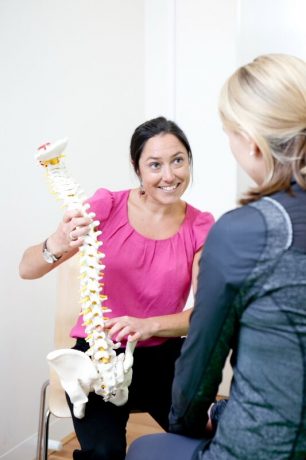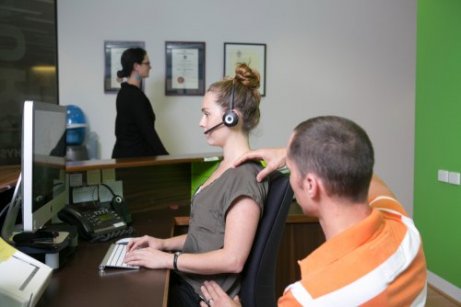Sitting vs Slouching
Published on
19 Apr 2018

Written by
Emma Martel (Lee)
Consultant Physiotherapist
Call us on: (03) 9975 4133
We all know that posture is important, but often sitting up 'straight’ feels like hard work. Unfortunately, the reality is that sitting upright might actually be causing or contributing to your neck or back pain!
Our bodies are not designed to sit all day long. However, if our work requires this of us, we need to ensure that we are sitting optimally to reduce the stress and strain on our bodies. Sitting related symptoms are incredibly common and may present as pain in your neck, back, shoulder blades, hip tightness, headaches or shoulder/arm pain.
Optimal Posture
When we slouch, it makes it more difficult for our postural stabilising muscles to turn on and work optimally. This increases the force and load through the joints in our spine, and can result in pain and tightness as other muscles and joints compensate.
On the other end of the spectrum, sitting excessively upright can also be problematic, as this can result in excessive muscle activation as they are forced to work overtime to hold us in this unnaturally upright posture.
Both of these extreme postures can lead to pain, muscular tightness, joint stiffness and fatigue, as well as a whole host of other symptoms. The goal is to place your spine and body in a nice neutral posture where you have a nice gentle curve in your neck, mid back and lower back. This allows our postural muscles – the small muscles that are designed to work at a low level for prolonged periods, to work optimally. These are not usually the ‘power’ or ‘moving’ muscles that we focus on strengthening at gym. Our muscles and joints are happiest when they are in a mid range position, and naturally ‘turn on’ and work optimally when they are placed in these postures.
How to sit correctly:
1. Sit on your Sit Bones
- When you go to sit down, slightly poke your bottom out as if you were doing a squat at the gym
- Sit all the way back in the chair so that there is no gap between your bottom and the base of the chair
- You should feel your ‘sit bones’ – the large bony bumps in your bottom (ischial tuberosities) pressing into the base of the chair
- You should feel stable, supported and comfortable in this posture
- This first step is the most important as it sets up a stable base when you are sitting. Everything else will balance on top of your pelvis whilst sitting, so if your pelvis is in a suboptimal position, it will make it much harder for your ribcage, shoulder blades, neck and head to be in the correct position
2. Relax into the back of the chair
- Try to relax your spine into the back of the chair. Gently relax your tummy muscles and back muscles. Allow your spine to be supported by the chair
- Often people try to sit upright by perching on the edge of the chair, often creating more ‘work’ for your back and hip muscles, causing muscles to feel tight, sore and uncomfortable. After a while you may end up relaxing into a slouching posture as you will feel like it’s too much hard work!

3. Relax your legs
- Allow your legs and hips to relax whilst sitting
- Perform a ‘leg check’ by gently rocking your thigh side to side with your hand. You should not feel resistance or restriction to this movement. If you do, you may need a foot stool or need to go through step #1 or #2 again
- Often our patients will grip their knees together, grip with their hip flexors or cross their legs whilst sitting. This is usually because they feel unstable whilst sitting, and are trying to seek out stability by tensing and bracing their muscles. This may also be because their feet are unsupported and they need a footstool. Other times, it’s because we aren’t quite sitting on our sit bones, and we need to reposition our pelvis as per step #1.
In summary, sitting correctly should NOT be hard work or cause pain or tightness. You should feel comfortable and well supported in the chair, and it shouldn’t feel strenuous.
Taking regular breaks from sitting is recommended, and sometimes a sit/stand desk can be a good option. This will be dependent on your individual working conditions, your setup and your posture.
We’re here to help.
If you would like some guidance on how to sit correctly, how to manage/resolve your symptoms related to sitting, or to discuss whether you think a sit-stand desk might be a good option for you, give us a call at Pure Physio!
About the Author
Emma Martel (Lee) — Consultant Physiotherapist
Emma values the importance of listening to her patients to fully understand their symptoms and treatment goals. Through skilled biomechanical analysis of the whole body, her objective lies not only in treating symptoms but identifying the true origin of the problem and working with her patients to prevent future episodes of pain and injury.



